Themed collection Emerging Investigators

Emerging Investigators 2018
This themed issue of Polymer Chemistry highlights the work of emerging investigators in polymer chemistry. Editor-in-Chief Christopher Barner–Kowollik introduces the issue.

Polym. Chem., 2018,9, 1469-1478
https://doi.org/10.1039/C8PY90042F
3D printing of photopolymers
Recent progress in the photoinitiators and monomers/oligomers of photopolymers for 3D printing is presented in the review.
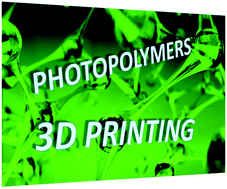
Polym. Chem., 2018,9, 1530-1540
https://doi.org/10.1039/C8PY00157J
Nitroxide radical polymers – a versatile material class for high-tech applications
A comprehensive summary of synthetic strategies for the preparation of nitroxide radical polymer materials and a state-of-the-art perspective on their latest and most exciting applications.
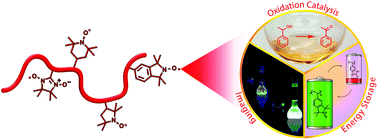
Polym. Chem., 2018,9, 1479-1516
https://doi.org/10.1039/C7PY02001E
Secondary structures of synthetic polypeptide polymers
Synthetic peptide-based polymers can fold into different secondary structures in the same way as do proteins. This review article presents how tuning the polypeptide secondary structure could be a key step to modulate various properties in advanced polymeric materials (size, rigidity, self-assembly, etc.).

Polym. Chem., 2018,9, 1517-1529
https://doi.org/10.1039/C7PY01725A
Polymers from sugars and CS2: synthesis and ring-opening polymerisation of sulfur-containing monomers derived from 2-deoxy-D-ribose and D-xylose
Cyclic thionocarbonate and xanthate monomers were synthesised directly from ribose- and xylose-derived diols and CS2, and yielded novel sugar-based polymers with regioregular sulfur-containing linkages.

Polym. Chem., 2018,9, 1577-1582
https://doi.org/10.1039/C8PY00119G
Facile synthesis of advanced gradient polymers with sequence control using furan-protected maleimide as a comonomer
Diverse advanced gradient polymers, including simultaneous, hierarchical, di-blocky, symmetrical, and tri-blocky gradient polymers, were facilely fabricated by applying furan protected maleimide as a co-monomer.
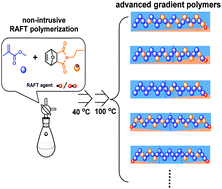
Polym. Chem., 2018,9, 1571-1576
https://doi.org/10.1039/C7PY02125A
Synthesis, aggregation and responsivity of block copolymers containing organic arsenicals
Block copolymers containing an organic arsenical (AsAm) have been synthesised by aqueous SET-LRP.
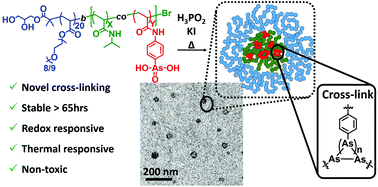
Polym. Chem., 2018,9, 1551-1556
https://doi.org/10.1039/C7PY01852E
Functional hydrophobic and hetero-grafted block comb polymers via a combination of spontaneous zwitterionic copolymerisation and redox-initiated RAFT polymerisation
Non-toxic hydrophobic and amphiphilic N-acylated poly(amino ester)-based comb polymers self-assemble into functional responsive nano-sized aggregates in aqueous solution.
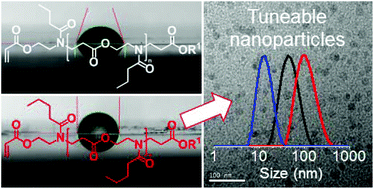
Polym. Chem., 2018,9, 1562-1566
https://doi.org/10.1039/C7PY01912B
Synthesis of a helical π-conjugated polymer with a dynamic hydrogen-bonded network in the helical cavity and its circularly polarized luminescence properties
We have succeeded in developing a circularly polarized luminescent π-conjugated polymer with a dynamic hydrogen-bonded network in the helical cavity.
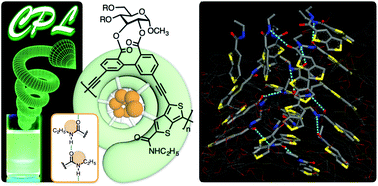
Polym. Chem., 2018,9, 1541-1546
https://doi.org/10.1039/C7PY01867C
Photochemical regulation of a redox-active olefin polymerization catalyst: controlling polyethylene microstructure with visible light
The utility of photoredox chemistry is expanded to include microstructural control of polyolefins.
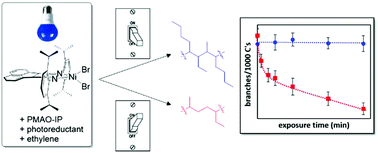
Polym. Chem., 2018,9, 1567-1570
https://doi.org/10.1039/C7PY01836C
Polymerizations in oil-in-oil emulsions using 2D nanoparticle surfactants
Oil-in-oil emulsions are especially attractive for compartmentalized reactions with water-sensitive monomers which cannot be used with traditional oil/water emulsions.
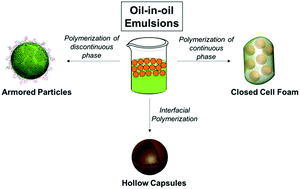
Polym. Chem., 2018,9, 1547-1550
https://doi.org/10.1039/C7PY01819C
Photolabile protecting groups: a strategy for making primary amine polymers by RAFT
Photolabile amine protecting groups are combined with RAFT polymerization to create well-defined amine containing polymers, which is typically a challenge for RAFT polymerization.
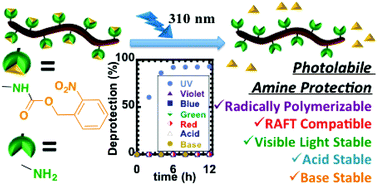
Polym. Chem., 2018,9, 1557-1561
https://doi.org/10.1039/C7PY01398A
A twin-tailed tadpole-shaped amphiphilic copolymer of poly(ethylene glycol) and cyclic poly(ε-caprolactone): synthesis, self-assembly and biomedical applications
A tadpole-shaped amphiphilic copolymer containing cyclic PCL and two PEG tails, PEG-b-(c-PCL)-b-PEG, was rationally designed and synthesized.

Polym. Chem., 2018,9, 4343-4353
https://doi.org/10.1039/C8PY00022K
Chemoenzymatic synthesis of polypeptides consisting of periodic di- and tri-peptide motifs similar to elastin
Elastin-like polypeptides containing proline were synthesized via chemoenzymatic polymerization and exhibited a temperature-dependent structural transition.
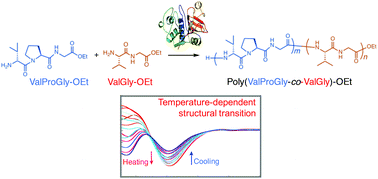
Polym. Chem., 2018,9, 2336-2344
https://doi.org/10.1039/C8PY00034D
Reversible-addition fragmentation chain transfer (RAFT) mediated depolymerization of brush polymers
Brush polymers synthesized by reversible-addition fragmentation chain transfer (RAFT) polymerization undergo controlled depolymerization when heated as dictated by polymerization thermodynamics.
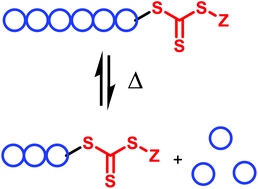
Polym. Chem., 2018,9, 2328-2335
https://doi.org/10.1039/C8PY00446C
The anionic ring-opening polymerization of N-(methanesulfonyl)azetidine
The first anionic ring-opening polymerization of an activated azetidine is reported.
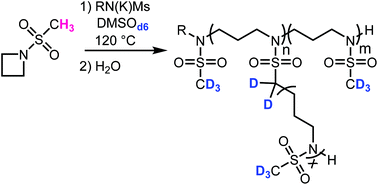
Polym. Chem., 2018,9, 1618-1625
https://doi.org/10.1039/C8PY00074C
Cyanotriphenylamine-based polyimidothioethers as multifunctional materials for ambipolar electrochromic and electrofluorochromic devices, and fluorescent electrospun fibers
New luminescent and electrochromic polyimidothioethers were synthesized and fabricated as ambipolar electrochromic and electrofluorochromic devices, and fluorescent electrospun fibers.

Polym. Chem., 2018,9, 1693-1700
https://doi.org/10.1039/C7PY01858D
Donor–acceptor conjugated ladder polymer via aromatization-driven thermodynamic annulation
The construction of coplanar conjugated ladder polymers featuring alternating donor–acceptor units has been achieved in high efficiency using ring-closing olefin metathesis.
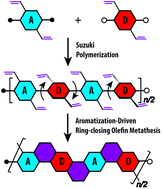
Polym. Chem., 2018,9, 1603-1609
https://doi.org/10.1039/C7PY02059G
Orange is the new white: rapid curing of an ethylene-glycidyl methacrylate copolymer with a Ti-bisphenolate type catalyst
The here established crosslinking chemistry opens up a by-product free method for rapid curing of epoxy-functionalised polyethylenes.
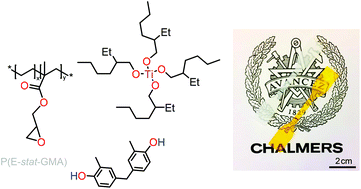
Polym. Chem., 2018,9, 1710-1718
https://doi.org/10.1039/C7PY01840A
Room temperature multicomponent polymerizations of alkynes, sulfonyl azides, and N-protected isatins toward oxindole-containing poly(N-acylsulfonamide)s
The development of a new polymerization methodology affords polymer materials with new structures and functionalities.
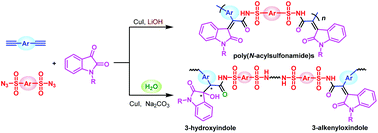
Polym. Chem., 2018,9, 1674-1683
https://doi.org/10.1039/C7PY01983A
Continuous-flow chemistry for the determination of comonomer reactivity ratios
Continuous-flow chemistry provides an operationally simple and reproducible method for the determination of comonomer reactivity ratios in a single afternoon.
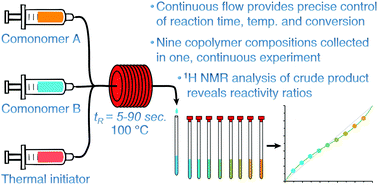
Polym. Chem., 2018,9, 1728-1734
https://doi.org/10.1039/C7PY01938F
Oxidation-responsive micelles by a one-pot polymerization-induced self-assembly approach
Combining a sequential, one-pot RAFT polymerization with the polymerization-induced self-assembly process results in a versatile oxidation-responsive carrier system.
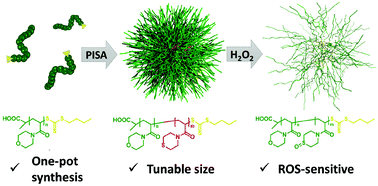
Polym. Chem., 2018,9, 1593-1602
https://doi.org/10.1039/C7PY01859B
Swelling properties of thermoresponsive/hydrophilic co-networks with functional crosslinked domain structures
We focused on the monomer/crosslinker sequence in a gel network and designed novel thermoresponsive/hydrophilic amphiphilic co-networks with crosslinked domain structures.
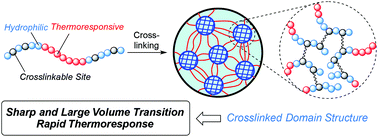
Polym. Chem., 2018,9, 1701-1709
https://doi.org/10.1039/C7PY01793F
A new echelon of precision polypentenamers: highly isotactic branching on every five carbons
A systematic study shows that bulky allylic substituents on cyclopentene monomers affords a highly precise microstructure after ring-opening metathesis polymerization.
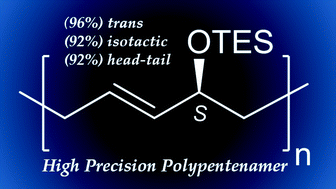
Polym. Chem., 2018,9, 1719-1727
https://doi.org/10.1039/C7PY01922J
Conjugate substitution and addition of α-substituted acrylate: a highly efficient, facile, convenient, and versatile approach to fabricate degradable polymers by dynamic covalent chemistry
Degradable poly(conjugated ester)s with various backbones were synthesized via conjugate substitution (SN2′) polymerization of bis[α-(chloromethyl)acrylate] and nucleophilic monomers under ambient conditions.
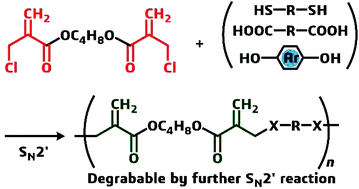
Polym. Chem., 2018,9, 1610-1617
https://doi.org/10.1039/C7PY02114C
3D-printing of dynamic self-healing cryogels with tuneable properties
3D-printable self-healing oxime gels have been reinforced by cryogelation, making these gels mechanically tuneable, macroporous, and doubly dynamic.
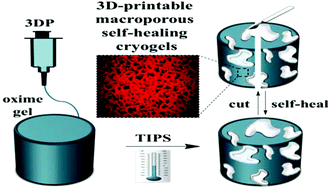
Polym. Chem., 2018,9, 1684-1692
https://doi.org/10.1039/C7PY01945A
Supracolloidal chains of patchy micelles in water
This work describes the programmable self-assembly of ABC triblock terpolymers into patchy micelles and further to supracolloidal chains in water.
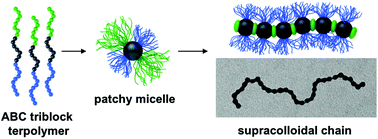
Polym. Chem., 2018,9, 1583-1592
https://doi.org/10.1039/C7PY01832K
Synthesis of star polymers using organocatalyzed atom transfer radical polymerization through a core-first approach
Star polymers containing 3–8 arms and a linear telechelic polymer are synthesized from a core-first approach using visible-light induced organocatalyzed atom transfer radical polymerization.
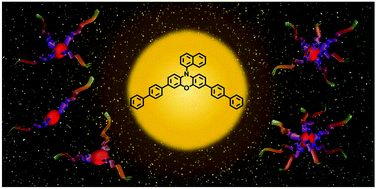
Polym. Chem., 2018,9, 1658-1665
https://doi.org/10.1039/C7PY01833A
Polymer brush guided templating on well-defined rod-like cellulose nanocrystals
Precisely grafted polymer brushes on cellulose nanocrystals guide the formation of silica and yield uniform CNC-based hybrid nanomaterials which are subsequently used in the fabrication of hollow and highly porous silica nanorods.
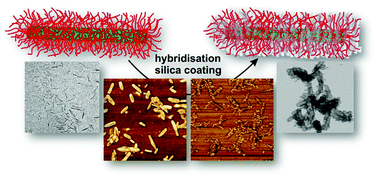
Polym. Chem., 2018,9, 1650-1657
https://doi.org/10.1039/C7PY01814B
Highly functional ellipsoidal block copolymer nanoparticles: a generalized approach to nanostructured chemical ordering in phase separated colloidal particles
Spatially controlled introduction of chemical functionalities into ellipsoidal block copolymer nanoparticles is achieved through pre- and post-assembly strategies.
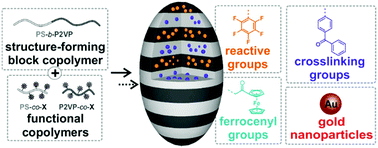
Polym. Chem., 2018,9, 1638-1649
https://doi.org/10.1039/C7PY01817G
A photocatalyst immobilized on fibrous and porous monolithic cellulose for heterogeneous catalysis of controlled radical polymerization
Fibrous and porous monolithic cellulose was employed to immobilize a photocatalyst for heterogeneously catalysing controlled radical polymerization, which provides superior catalyst recyclability.
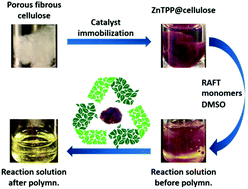
Polym. Chem., 2018,9, 1666-1673
https://doi.org/10.1039/C7PY01690E
Pure hydrophilic block copolymer vesicles with redox- and pH-cleavable crosslinks
The formation and stimuli cleavable crosslinking of completely water drained double hydrophilic block copolymer vesicles is presented.

Polym. Chem., 2018,9, 1626-1637
https://doi.org/10.1039/C7PY01214D
The effects of polymer topology and chain length on the antimicrobial activity and hemocompatibility of amphiphilic ternary copolymers
Hyperbranched random copolymers that consist of ethylhexyl hydrophobic groups have the best selectivity compared to linear random and block copolymers.
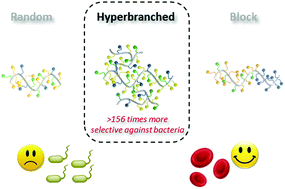
Polym. Chem., 2018,9, 1735-1744
https://doi.org/10.1039/C7PY01069A
Correction: The effects of polymer topology and chain length on the antimicrobial activity and hemocompatibility of amphiphilic ternary copolymers
Polym. Chem., 2018,9, 1745-1745
https://doi.org/10.1039/C7PY90140B
About this collection
Emerging Investigators, 2018